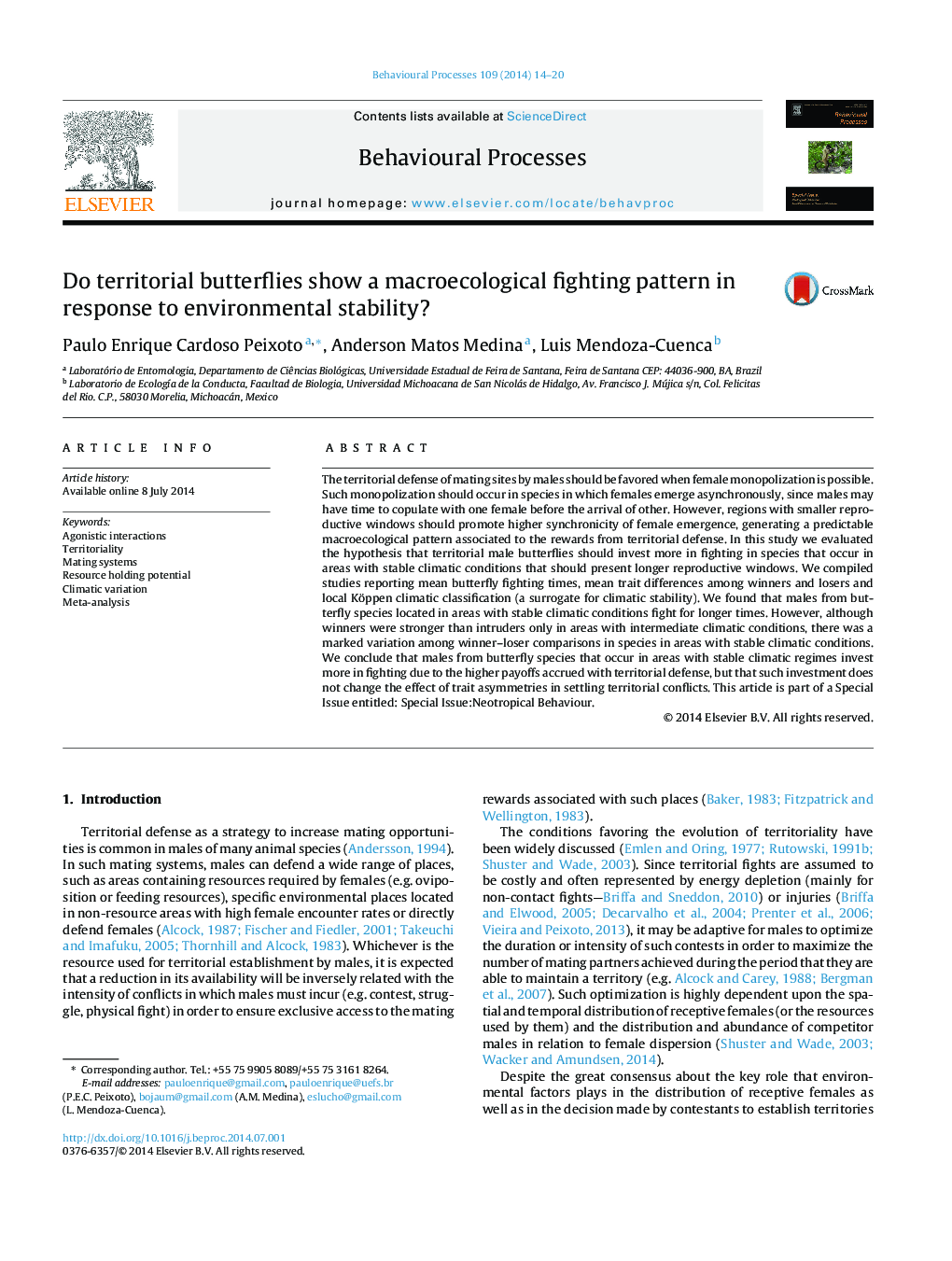| کد مقاله | کد نشریه | سال انتشار | مقاله انگلیسی | نسخه تمام متن |
|---|---|---|---|---|
| 2426715 | 1105916 | 2014 | 7 صفحه PDF | دانلود رایگان |
• We used a meta-analysis to evaluate a macroecological pattern in butterfly territorial contests.
• Males located in areas with higher climatic stability through the year fought for more time.
• Winners were stronger than losers in species located in areas with intermediate climatic regimes.
• Winner–loser comparisons were more variable in species in areas with stable climatic conditions.
• Climate seems to predictably determine male investment in fighting.
The territorial defense of mating sites by males should be favored when female monopolization is possible. Such monopolization should occur in species in which females emerge asynchronously, since males may have time to copulate with one female before the arrival of other. However, regions with smaller reproductive windows should promote higher synchronicity of female emergence, generating a predictable macroecological pattern associated to the rewards from territorial defense. In this study we evaluated the hypothesis that territorial male butterflies should invest more in fighting in species that occur in areas with stable climatic conditions that should present longer reproductive windows. We compiled studies reporting mean butterfly fighting times, mean trait differences among winners and losers and local Köppen climatic classification (a surrogate for climatic stability). We found that males from butterfly species located in areas with stable climatic conditions fight for longer times. However, although winners were stronger than intruders only in areas with intermediate climatic conditions, there was a marked variation among winner–loser comparisons in species in areas with stable climatic conditions. We conclude that males from butterfly species that occur in areas with stable climatic regimes invest more in fighting due to the higher payoffs accrued with territorial defense, but that such investment does not change the effect of trait asymmetries in settling territorial conflicts. This article is part of a Special Issue entitled: Special Issue:Neotropical Behaviour.
Journal: Behavioural Processes - Volume 109, Part A, November 2014, Pages 14–20
